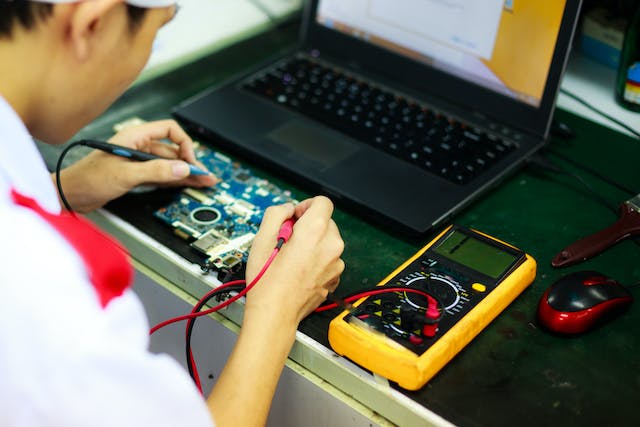Right to Repair: A Solution to Disposability or a Threat to Our Security?
Mass consumption has become a norm for consumers around the world. Most of us buy fast fashion products without thinking twice about the environmental impact of our actions.
The same goes for electronic devices, namely phones and computers. We tend to replace them every two years even though there is usually nothing structurally wrong with the item. Surely, some devices require repairs, but those are too pricey.
Is there a way to put an end to throwaway culture? It seems like the situation is already changing for the better in the European Union as leading countries adopt the right-to-repair initiative.
But while we wait for that idea to spread globally, consumers can still help the environment by repairing their devices and maintaining good cybersecurity. Mastering how to use a VPN and antivirus software can extend the lifespan of electronics.
So, let’s dive deeper into the topic of the right to repair.
Throwaway culture: what is it?
Before we were swept away by mass consumption, products, in general, were high quality and made to last longer. Now, we tend to buy new phones every year or two and then get rid of the old model even though it is still usable. The availability of various items and online shopping has turned us into consumers who contribute to the throwaway culture almost daily.
So, what does that term mean? Throwaway culture is the practice of throwing away everyday items even though they are functional and repairable. It’s not limited to electronics, as people tend to get rid of clothes and other products. The unnecessary waste ends up in landfills and contributes to climate change.
Just a couple of decades ago, people were more careful about the items they owned. Repairing household appliances was a standard practice. But by the early 2000s, manufacturers began changing the designs of their products, making it impossible to hire any repairman to fix a problem for a low price or even deal with it yourself.
The perfect example is Apple, whose phones and laptops became sealed boxes that can’t be upgraded or repaired by a user. Instead, if someone needs to fix a device, they have to find the official repair service and pay quite a lot.
Customers gradually realized that it was better to invest that money into a new device with better hardware, which resulted in a throwaway culture. But things are changing in the European Union.
Throwaway culture has environmental and economic consequences, and those have been recognized by members of the European Union. Several surveys have uncovered why consumers are more likely to buy a new product than fix the old one.
As expected, the cost of repairs is simply too high, and they need to add just a bit more money to get a brand-new item. Furthermore, repair shops are usually hard to find, and some are not very forthcoming regarding the repair process or the price.
Right to repair
Some EU countries are already taking small steps toward lowering the cost of repairs in some situations. However, the European Commission is pushing for the right to repair within the European Green Deal initiative. Promoting sustainability and allowing consumers to find repair shops and fix their items is important for reducing waste and saving the environment.
The changes are significant because consumers will receive a two-year warranty, and every repair needs to be prioritized. Companies that make washing machines and other household items need to be able to repair their products for ten years after it hits the market. To improve transparency, consumers may ask for a repair information form in every repair shop. There will be no surprises when it comes to price, and repair shops will be required to provide high-quality service that meets the standards.
Are old electronics safe?
Not everyone can afford to upgrade their phone or computer every two years, and some consumers purchase used electronics that are way cheaper than the latest model. This approach is sustainable because used products still have the hardware that works just fine. But what about the software?
For instance, older iPhones and Android phones will come with outdated software that can’t be updated anymore. That means a device is no longer supported by the manufacturer and can’t download safety updates. Manufacturers stop providing patches to older phones simply because it is too much work. After all, there are dozens of newer models that require their attention.
As a result, you’ll be putting your personal information at risk because cybercriminals are always searching for security vulnerabilities. Using an unsupported device means that hackers already know how to infect the system with malware or find a way to access your data.
The role of cybercriminals
Hackers are also a part of throwaway culture because they make it harder for people who want to continue using their old phones or computers. Cybercriminals know how to hack into older devices and sometimes lock users out using ransomware. Consumers are often more likely to buy a new device than send money to an unknown person to gain back access.
Malware, in general, can be avoided by implementing basic cybersecurity measures, such as using strong passwords and recognizing common cyber attacks. Users could benefit from several security tools, too. Learning how to use a VPN is not hard at all, and combining that app with antivirus software can go a long way in terms of cybersecurity.

